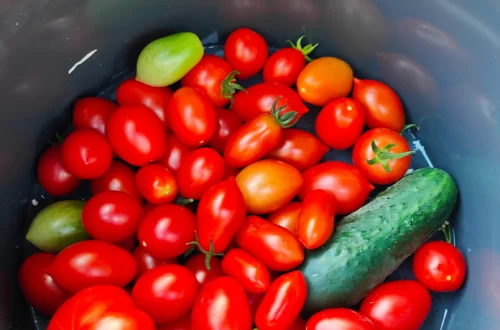Sugar and the Bees
Sugar and the Bees – Sustainable Food Production
The use of neonicotinoids is controversial, but we know that they are absolutely lethal to bees. They are a class of neurotoxic pesticides, banned in the EU, loved by Sugar Beet farmers in the UK. Their use has sparked intense debate among scientists, environmentalists and policymakers. As their impact on ecosystems becomes increasingly evident, the call for a ban on these substances has gained momentum. This post will explore the effect of such a ban which finally appears to be in place on the UK Statute Book.
On the other hand and rather dramatically, Sugar could be described as lethal to humans. This is the crop which is reliant on Neonicotinoids grown around 100,000 hectares n the UK. Sugar beet is grown entirely to produce Sugar. It has a byproduct, Sugar Beet Pulp which is a useful animal feed with about two million tonnes produced each year.
A sugar beet pile at British Sugar’s Bury St Edmunds factory
Farmer Reaction and Why this is a Great Development for UK Farmers
The Farming lobby and the NFU are up in arms. This is another unfair attack on struggling British farmers by a left wing government. As if reintroducing inheritance tax wasn’t already a step too far. Well, it is a wake up call. We are far too reliant on a handful of monoculture crops. In the UK, those monoculture crops are not profitable. That’s the real problem with farming and abandoning the European Union was rank stupidity. Climate change coupled with the need to develop a sustainable future for our farming means we must become more reliant upon the EU for food.
The Science and Controversy Surrounding Neonicotinoids
Neonicotinoids were introduced in the 1990s as a solution to agricultural pest problems. However, their efficacy has been overshadowed by evidence linking them to significant declines in bee populations and other beneficial insects. Critics argue that these pesticides disrupt the neurological functions of pollinators, leading to diminished reproductive capabilities and increased mortality rates. The controversy centers around the balancing act between agricultural productivity and the preservation of biodiversity.
Given the pivotal role that pollinators play in food production—contributing to approximately one-third of global food supplies—the implications of neonicotinoid use extend well beyond the immediate agricultural environment. As the insect population wanes, so does the ability of ecosystems to sustain themselves, leading to a cascading effect that threatens food security and ecosystem health.
Impact on the Environment and Biodiversity
The impact of neonicotinoids on the environment is profound. Studies indicate that these chemicals not only diminish pollinator populations but also affect non-target insects, aquatic ecosystems, and soil health. Neonicotinoids can persist in the environment, contaminating water sources and accumulating in the food chain, thereby affecting a range of species, from insects to birds and mammals.
The broader ecological consequences are alarming; ecosystems rely on the interconnectedness of various species. The decline of one species often leads to the decline of others, resulting in a loss of biodiversity that can take generations to recover. This loss isn’t merely a concern for environmentalists but poses a direct threat to agriculture, which depends on healthy ecosystems for crop pollination and pest control.
What is Sugar Beet Used For?
Sugar beet is a root vegetable that serves as one of the primary sources of sugar production, particularly in Europe and North America. Its high sucrose content makes it an essential crop for sugar manufacturing, and it plays a vital role in the agricultural economy. Beyond sugar production, sugar beet is also utilized to produce biofuels, animal feed, and various industrial products, showcasing its versatility.
The sugar extracted from sugar beet is used in countless consumer products, ranging from sweeteners to processed foods. Its applications extend into beverages, baked goods, and candies, making it a staple in the food industry. Additionally, by-products from sugar beet processing, like molasses and pulp, are valuable in the production of animal feed, further establishing sugar beet’s significance in agricultural practices.
Overview of Sugar Beet Applications
In the food industry, sugar beet is primarily processed into granulated sugar, which is an essential ingredient in various products. The sugar extracted from sugar beets is chemically similar to cane sugar, but its production process differs. Sugar beet cultivation allows farmers to produce sugar in regions where sugar cane cannot thrive, providing a reliable supply chain for sugar across diverse climates.
Besides its direct applications in food production, sugar beet also finds utility in renewable energy. The residual pulp from sugar production is a high-energy feed component for livestock, thus connecting sugar production with animal husbandry. This diversification of use exemplifies how a single crop can contribute to multiple sectors, from food to fuel.
The Role of Sugar Beet in the Food Industry
The importance of sugar beet in the food industry cannot be overstated. It serves as a key ingredient in processed foods, contributing not only sweetness but also texture and preservation. The sugar produced from sugar beet is a crucial component in products ranging from sauces to desserts, highlighting its widespread appeal and versatility.
Furthermore, sugar beet’s role goes beyond merely providing sweetness. Sugar acts as a preservative in jams and jellies, enhances flavors in savory dishes, and aids in fermentation for products like bread and beer. This multifaceted utility reinforces the need for continued exploration of sustainable agricultural practices surrounding sugar beet cultivation.
Do We Really Need Sugar Beet?
While sugar beet is an integral part of our food production system, it raises the question of necessity. The increasing awareness of health issues related to sugar consumption has led to discussions about the need for sugar beet in modern diets. Alternatives to sugar beet, such as high-fructose corn syrup, cane sugar, and natural sweeteners like honey and stevia, are becoming more prevalent in the market, prompting a reassessment of traditional sweetening methods.
Moreover, as consumers seek healthier options, the food industry is adapting by developing products with reduced sugar content or utilizing alternative sweeteners. This shift indicates a growing recognition of the health risks associated with high sugar consumption and suggests that the reliance on sugar beet may diminish as healthier options gain popularity.
Alternatives to Sugar Beet in Production
The search for alternatives to sugar beet is driven by a combination of health concerns and environmental sustainability. Natural sweeteners, such as agave nectar, maple syrup, and coconut sugar, present options that many consumers view as healthier. These alternatives often contain additional nutrients, offering a more holistic approach to sweetening foods.
In addition to natural sweeteners, there has been a marked increase in the use of artificial sweeteners and sugar substitutes, such as aspartame and sucralose. Although these options are often marketed as calorie-free solutions, debates surrounding their long-term health effects continue. Hence, while alternatives exist, the conversation about the health implications of these substitutes is evolving.
The Shift Towards Healthier Sweeteners
The public’s growing awareness of the negative health effects associated with excessive sugar consumption is prompting a significant shift towards healthier sweeteners. This trend is not only shaping consumer preferences but also influencing food manufacturers to reformulate their products. Many companies are now focusing on reducing sugar levels and replacing them with healthier options—reflecting a broader cultural shift towards health consciousness.
In response to this trend, the market for natural sweeteners is expanding rapidly. Brands are increasingly incorporating stevia, monk fruit, and erythritol into their products as alternatives to traditional sugar. These sweeteners often have lower glycemic indices and fewer calories, appealing to health-conscious consumers looking to maintain a balanced diet.
Sugar Beet Pulp: A Missed Opportunity for Livestock Farmers
One of the lesser-known aspects of sugar beet production is its by-product: sugar beet pulp. This fibrous material, produced during the sugar extraction process, is rich in nutrients and serves as an excellent source of feed for livestock. Despite its high nutritional value, sugar beet pulp has not been utilized to its full potential in many farming operations, often being overlooked in favor of more traditional feed sources.
Livestock farmers can benefit significantly from incorporating sugar beet pulp into their feeding regimens. It offers a cost-effective alternative to other feed options and can enhance the overall health and productivity of livestock. However, challenges such as limited awareness about its benefits and logistical issues around sourcing and storage can impede its widespread adoption among farmers.
The Importance of Sugar Beet Pulp in Animal Feed
Sugar beet pulp is an excellent source of digestible fiber, which is crucial for maintaining digestive health in ruminant animals like cattle and sheep. Its high palatability encourages consumption, making it a favored choice among livestock. Moreover, sugar beet pulp is low in starch, which can help mitigate the risk of digestive disorders commonly associated with high-starch feeds.
In addition to improving digestion, sugar beet pulp is known to enhance milk production in dairy cows and promote healthy weight gain in cattle. Its nutritional profile supports overall animal health, offering a balanced mix of energy, protein, and fiber. As livestock farmers seek to optimize feed efficiency and animal welfare, sugar beet pulp emerges as a valuable component of sustainable feeding practices.
Challenges Faced by Livestock Farmers
Despite its benefits, livestock farmers encounter various challenges when it comes to utilizing sugar beet pulp. One significant barrier is the lack of access to reliable sources of sugar beet pulp, particularly in regions where sugar beet cultivation is limited. Farmers often rely on local supply chains, which can be disrupted by seasonal fluctuations in sugar beet production.
Additionally, the storage and preservation of sugar beet pulp can pose challenges. If not properly managed, sugar beet pulp can spoil or ferment, leading to potential losses in feed quality. Farmers must invest in appropriate storage facilities and management techniques to ensure that they can take full advantage of the nutritional benefits that sugar beet pulp offers.
The Detrimental Effects of Sugar on Health
As discussions surrounding sugar consumption intensify, it’s essential to examine its health implications. High sugar intake has been linked to various health issues, including obesity, diabetes, heart disease, and tooth decay. The excessive consumption of sugar, particularly in processed foods and sugary beverages, contributes significantly to public health crises worldwide.
According to the World Health Organization, the recommended daily intake of added sugars should not exceed 10% of total energy intake. However, many individuals consume far more than this guideline suggests. The rising rates of obesity and related health complications underscore the urgent need for increased public awareness regarding sugar consumption and its adverse effects.
Understanding the Health Risks Associated with Sugar
Research shows that sugar not only contributes to weight gain but also plays a role in the development of chronic diseases. Excessive sugar consumption is associated with insulin resistance, a precursor to type 2 diabetes. Furthermore, high sugar intake is linked to increased triglyceride levels, leading to heart disease and other cardiovascular issues.
In addition to physical health risks, sugar poses mental health concerns. Studies indicate a connection between high sugar diets and mood disorders, such as anxiety and depression. The addictive nature of sugar can lead to cravings and cycles of overconsumption, complicating efforts to maintain a balanced diet. These implications necessitate a broader conversation about the social and environmental factors influencing dietary choices.
Statistics on Sugar Consumption and Obesity
The statistics surrounding sugar consumption are alarming: according to the Centers for Disease Control and Prevention (CDC), over 36% of adults in the United States are classified as obese. This epidemic is closely tied to dietary habits that include high sugar consumption, particularly from processed foods. The rise in sugar-laden beverages has been particularly notable, with Americans consuming an average of 200 calories from sugary drinks each day.
Moreover, the prevalence of type 2 diabetes has surged in recent years, correlating strongly with rising sugar intake. The American Diabetes Association reports that nearly 30 million Americans are affected by diabetes, with many more at risk. As the connection between sugar and health becomes clearer, it is essential for individuals and communities to reassess dietary habits and make informed choices.
Sugar’s Ubiquity in Processed Foods
Sugar has permeated the food supply to such an extent that it is often hidden in unsuspected products. From sauces to snacks, sugar is used not just for sweetness but also to enhance flavor, texture, and shelf life. The food industry frequently employs sugar in various forms—sucrose, high-fructose corn syrup, and honey—making it challenging for consumers to identify and limit their sugar intake.
This ubiquity raises significant concerns regarding transparency in food labeling. Many consumers are unaware of the total sugar content in products they frequently purchase, which can lead to unintended overconsumption. The need for clearer and more comprehensive labeling practices has become a rallying point for health advocates seeking to reduce sugar intake at the population level.
How Sugar is Hidden in Everyday Products
Food manufacturers often utilize an array of alternative names for sugar, making it difficult for consumers to recognize its presence. Ingredients such as dextrose, maltose, sucrose, and corn syrup are just a few examples of how sugar can be masked within ingredient lists. This tactic can mislead consumers who are striving to make healthier choices.
Moreover, sugar can be found in many products that do not taste sweet, such as salad dressings, breads, and sauces. This pervasive presence in savory foods contributes to unsuspecting high sugar consumption, prompting the need for heightened consumer education about food ingredients. By raising awareness, individuals can make more informed dietary decisions and advocate for healthier food options.
Raising Awareness About Sugar Content
In an effort to combat the negative impacts of sugar consumption, raising awareness about sugar content in foods is crucial. Educational campaigns focused on nutrition can empower consumers to understand the implications of high sugar intake and make healthier choices. This includes understanding how to read food labels critically and identify hidden sugars in products.
Additionally, policymakers and health organizations play a vital role in promoting awareness. Initiatives aimed at reducing sugar consumption, such as taxation on sugary beverages and educational programs in schools, can foster a culture of health-consciousness. Together, we can pave the way towards a more informed society that prioritizes healthier eating habits.
Conclusion
The ban on neonicotinoids is just one part of a larger conversation about sustainable agricultural practices and the impact of sugar on health and the environment. However without Bees the human race is done for.
The conversations surrounding sugar and the bees must continue, encouraging individuals to change their dietary habits whilst promoting awareness about hidden sugar in all foods.
One thing is certain; Bee killing pesticides don’t just kill bees, they kill butterflies and moths and a multitude of other invertebrates too. The ban must be and remain non negotiable. Sugar and the Bees? We can live without one but not the other.
Farmers have been incentivised to grow a crop that causes obesity, while Prof Richard Evershed says they should turn their skills to growing genuinely nutritious food. We don’t need Sugar Beet and we don’t need the cattle that eat sugar beet pulp.
FAQs
What are neonicotinoids?
Neonicotinoids are a class of neurotoxic pesticides that affect the central nervous system of insects, leading to declines in pollinator populations and biodiversity.
What is sugar beet used for?
Sugar beet is primarily used for sugar production, but it also serves as animal feed and can be utilized in biofuel production and various industrial applications.
Are there healthier alternatives to sugar beet?
Yes, alternatives include natural sweeteners like stevia and honey, as well as artificial sweeteners, which offer different nutritional profiles.
What are the health risks associated with excessive sugar consumption?
High sugar consumption has been linked to obesity, type 2 diabetes, heart disease, and tooth decay, among other health problems.
How can we raise awareness about sugar content in foods?
Educational campaigns, clearer labeling practices, and community initiatives can help inform consumers about sugar content and promote healthier choices.
In conclusion, exploring the implications of neonicotinoid usage, the role of sugar beet in our diets, and the need for informed choices is crucial in navigating the path towards a sustainable and healthy future. By encouraging awareness and understanding, we can collectively work towards a healthier society.


